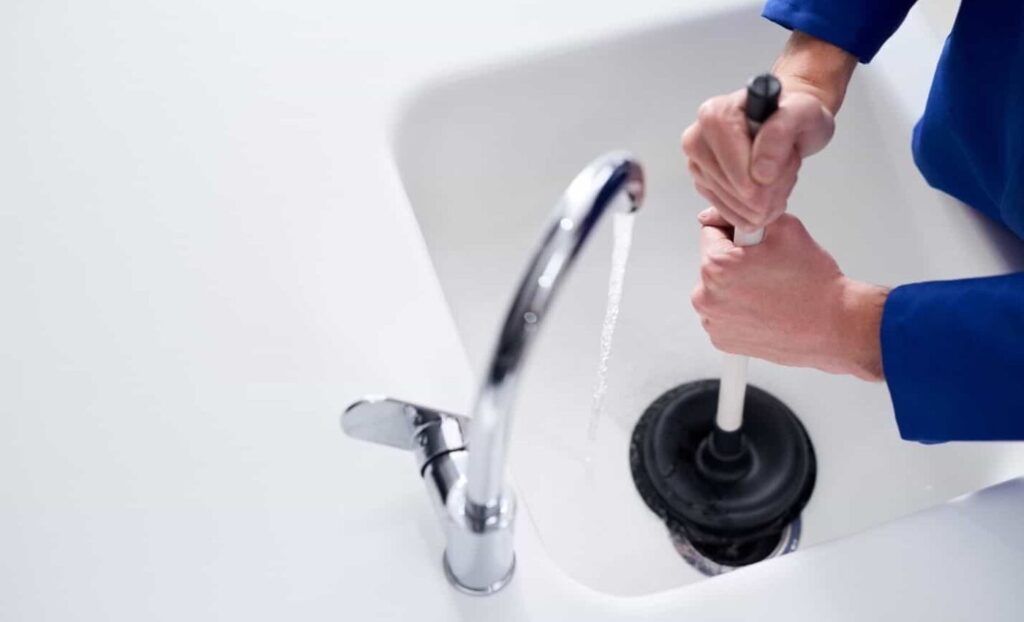In the daily hustle and bustle, we often overlook a seemingly innocuous issue that can wreak havoc on our plumbing system: hair buildup causing persistent drain clogs. Picture this: you’re running late for work, hastily finishing your morning shower, and as the water swirls down the drain, it slows to a frustratingly sluggish pace. This nuisance, however minor it may seem, can quickly escalate into a major plumbing nightmare. The significance of preventing these clogs cannot be overstated; it’s the key to maintaining a smoothly functioning plumbing system that saves you from unnecessary stress and expenses.
Understanding the Culprit: Hair Buildup
The Unwanted Role of Hair in Drain Clogs
Hair, being an everyday part of our lives, can surprisingly become a major culprit in causing those pesky drain clogs. It’s easy for strands of hair to find their way into drains and pipes during showers or grooming routines. Over time, these seemingly harmless hairs accumulate, intertwining with soap residue, grease, and other debris. This gradual buildup transforms into a formidable barrier within the plumbing system, leading to slow draining and eventually complete blockages. Understanding how hair gets caught and acknowledging its potential for accumulation is key to combating this common issue.
The Impact of Hair Buildup on Drainage
As hair makes its way into your drains, it forms a net-like structure that traps everything from small particles to larger chunks of debris. This slows down the flow of water and can ultimately lead to frustrating clogs. The accumulation of hair and debris restricts the smooth passage of water, causing showers to turn into ankle-deep baths and sinks to hold onto water longer than usual. The gradual nature of this process often makes it hard to notice until the drainage problem becomes apparent. Addressing this issue requires a proactive approach that goes beyond reactive measures, ensuring your plumbing remains free-flowing and hassle-free.
4 Effective Prevention Methods
1. Regular Use of Drain Screens
To keep your drains flowing smoothly, consider incorporating drain screens into your routine. These simple yet effective devices can be easily installed in sinks and showers. They work by capturing hair and debris before they can clog your pipes. Regular maintenance is key – make it a habit to clean or replace the screens on a schedule that suits your household’s needs.
2. Routine Maintenance with Baking Soda and Vinegar
Embrace a natural cleaning solution for your drains with the power duo of baking soda and vinegar. This age-old method offers a practical way to prevent hair buildup. Begin by introducing a mixture of baking soda and vinegar into your drains, followed by hot water. The fizzing action helps break down residue and maintain clear pathways for water flow. Regular utilization of this method can provide lasting benefits for your drainage system.
3. Professional Drain Cleaning
Occasional professional drain cleaning plays a vital role in maintaining optimal drain health. Experts utilize specialized tools to target and clear hair buildup that may be hard to reach with household methods. By scheduling periodic professional cleaning, you can prevent potential blockages and ensure your drains function flawlessly. Discuss with professionals the ideal frequency based on your usage and home’s needs.
4. DIY Hair Catchers
Explore the creative side of prevention with DIY hair catchers. Crafting these simple yet ingenious devices using common household items can be both effective and convenient. By placing these catchers in your drains, you can significantly reduce the amount of hair and debris that enters your pipes. Strike a balance between effectiveness and ease by customizing your catchers to suit your preferences and keep your drains free-flowing.
Incorporating Preventive Habits
Hair Brushing Outside of the Shower
Encourage the practice of brushing your hair prior to stepping into the shower. This simple habit can have a significant impact on minimizing the amount of hair that finds its way into your drains. By giving your hair a thorough brush before bathing, you can substantially reduce the risk of clogs forming in your plumbing system due to hair buildup. This step not only keeps your drains free-flowing but also contributes to the overall health of your plumbing setup.
Regular Plumbing Inspections
Make it a point to schedule periodic plumbing inspections as part of your maintenance routine. By doing so, you’re taking proactive steps to identify potential issues before they escalate into major clogs. Regular checks allow you to detect any early signs of hair or debris accumulation within your pipes, ensuring that you address these concerns before they lead to more severe blockages. This preventive approach can save you both time and money in the long run while maintaining the smooth operation of your plumbing system.
Incorporating these preventive methods into your routine can make a world of difference in keeping hair buildup at bay and ensuring your plumbing system functions smoothly. By addressing the issue proactively, you’re saving yourself from the hassle of persistent clogs and potential plumbing emergencies.
Publisher’s Details:
Plumbing Squad
(866) 442-1897
plumbingsquad.com
info@plumbingsquad.com
Many chemical drain cleaners pose risks to your pipes and the environment. For a safer approach, consider reading “The Risks of Using Chemical Drain Cleaners.” Looking for stress-free plumbing services in Anaheim, CA? Plumbing Squad offers the best plumbing solutions
<iframe src=”https://www.google.com/maps/embed?pb=!1m18!1m12!1m3!1d423284.6897532054!2d-118.17086969999998!3d34.020479!2m3!1f0!2f0!3f0!3m2!1i1024!2i768!4f13.1!3m3!1m2!1s0x80dd29078d8c8325%3A0x5f813a01e60b6829!2sPlumbing%20Squad!5e0!3m2!1sen!2sph!4v1692188833580!5m2!1sen!2sph” width=”600″ height=”450″ style=”border:0;” allowfullscreen=”” loading=”lazy” referrerpolicy=”no-referrer-when-downgrade”></iframe>
You may also like
-
Why Summer is the Season to Celebrate Your Plumber: Water Wisdom for Warmer Weather
-
Hidden Heroes: The Impact of Commercial Heating on Productivity and Comfort with CSB Plumbing Company
-
Columbus Clogged Drain Repair: Trust the Expertise of Doc Thompson Plumbing
-
Quick Clear Drainage – A Knowhow
-
The Hidden Dangers of DIY Plumbing Repairs for Richmond Homeowners

